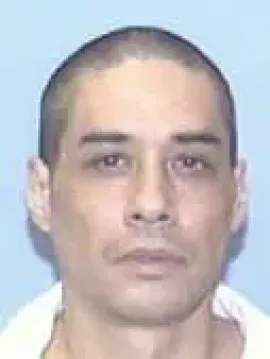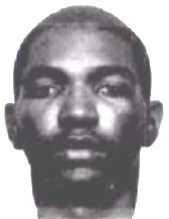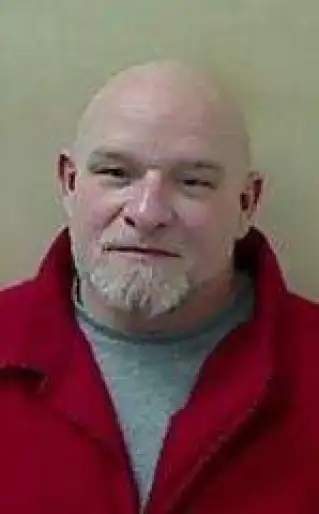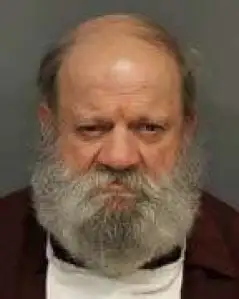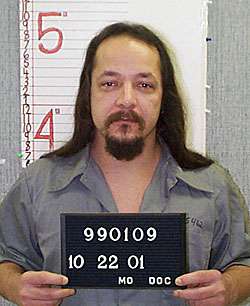Perry Austin Murders 9 Year Old In Texas
Perry Austin was sentenced to death by the State of Texas for the murder of a nine year old boy
According to court documents Perry Austin went to a home looking for the victim’s older brother however since he was not there he would grab the nine year old boy, David Karim Kazmouz.
Perry Austin would murder David Karim Kazmouz. The little boy’s remains would be found nine months later
Perry Austin would be arrested, convicted and sentenced to death
Perry Austin Photos
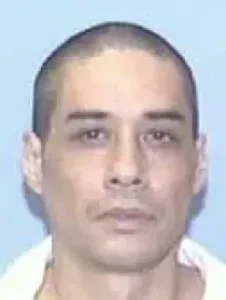
Perry Austin FAQ
Where Is Perry Austin Now
Perry Austin is incarcerated at the Polunsky Unit
Perry Austin Case
In 1978, [Austin] raped one of his adolescent sisters at gunpoint and attempted to rape another, before robbing a third, older sister and his mother․ A jury convicted Austin of rape, attempted rape, and aggravated robbery.
Following this conviction, Perry Austin was released on parole in 1991 and began a sexual relationship with J.O., a fourteen-year-old female. Through J.O., Austin met D.K., a nine-year-old male. D.K. disappeared in August 1992. While investigating D.K.’s disappearance, police discovered Austin’s relationship with J.O. and charges were brought against Austin. He pled guilty to sexual assault of a child and received a thirty-year sentence. In April 1993, D.K.’s remains were found. Although there was physical evidence connecting Austin to D.K.’s murder and Austin admitted that D.K. had been in his vehicle the day of D.K.’s disappearance, police did not believe they had sufficient evidence to prove Austin was responsible for D.K.’s murder.
Perry Austin alleges that prison conditions caused his mental health to deteriorate after he was incarcerated for sexually assaulting J.O. In 1995, he stabbed another prisoner and received an additional twenty-year sentence. By this point, Austin was confined in administrative segregation.
In September 2000, Perry Austin wrote a letter to a Houston police officer, stating that he would confess to D.K.’s murder if he would be guaranteed the death penalty. [Austin stated if that was not guaranteed, he would kill a prison guard as a way of guaranteeing himself the death penalty.] 1 Austin was interviewed at the state prison and confessed orally and in writing to slitting D.K.’s throat with a knife because Austin was angry at D.K.’s brother for allegedly stealing drugs from Austin’s car. Austin was indicted for capital murder on February 15, 2001. On March 21, Mack Arnold was appointed to represent Austin.2
Prior to his trial, Perry Austin wrote a number of letters to the state trial court. In his first letter, Austin explained that he “[did] not want, nor require an attorney to represent [him]” and that he “[was] willing to face whatever consequences due [him] for [his] heinous and deplorable acts.” 3 He also indicated he would accept a death sentence and waive any appeals.4 He stated that he was “fully aware of [his] rights and [was] fully competent to stand before you and make these decisions.” 5 Austin explained that he had not had peace of mind since the murder, that his “mental stability [had] steadily decreased,” and that he was using drugs again.6
Several months later, Perry Austin wrote to the state trial court requesting to be released from administrative segregation or, alternatively, that his trial be moved to an earlier date.7 Austin reasoned that he had not had a disciplinary incident since entering the county jail and that, even though he was charged with capital murder, he suspected “others in population [had] similar charges.” 8 He further stated that he “[could not] handle prolonged isolation” because he “[has] a very bad problem with depression” and contemplates suicide often when depressed.9 Several weeks later, Austin again requested an earlier trial date.10 Austin explained to the state trial court: “No, I don’t have a death wish, or at least you all can’t prove it․ I am fully competent and definitely know the difference between right and wrong.” 11 In his last letter to the state trial court before the pretrial hearing to determine if Austin could represent himself, Austin again requested to proceed pro se, noting he was “fully aware of the consequences” and “aware that this is within [his] right.” 12 He also stated that he did not wish to participate in jury selection and that he would “not contest any juror the prosecution selects.” 13
Prior to trial, Austin’s counsel requested that the state trial court permit and authorize payment for a psychological examination of Austin by Dr. Jerome Brown, a clinical psychologist.14 The trial court granted counsel’s request,15 although it appears that counsel did not immediately seek Dr. Brown’s services.16 The trial court held a conference in chambers six weeks later and explained to Austin that it wanted a psychological evaluation performed before it could decide whether Austin could proceed pro se.17 The trial court ordered Dr. Brown to evaluate Austin to determine his competency to stand trial.18 In his report, prepared after meeting with Austin, Dr. Brown noted that Austin “had no trouble providing relevant and coherent background information,” was able to describe the charges against him and the court proceedings that had occurred, and could explain why he wanted to represent himself.19 Dr. Brown concluded that Austin was “alert, well-oriented, and able to communicate his ideas without difficulty.” 20 Dr. Brown also noted that Austin displayed no “bizarre verbalizations,” hallucinations, or delusions typically indicative of severe mental illness nor did he exhibit any indication of disorganization, confusion, or other significant difficulties in communication.21 Although the report acknowledged Austin’s use of alcohol and drugs in prison, it did not otherwise mention any past mental health issues.22 Dr. Brown concluded that Austin was competent to stand trial.23
After the evaluation, the state trial court held a pretrial Faretta hearing to consider Austin’s request to proceed pro se. Under Faretta v. California, a criminal defendant has a right to self-representation.24 To exercise that right, a defendant must competently, knowingly, and intelligently waive his right to counsel.25 At the hearing, the trial court noted that it had read Austin’s letters and spoken with Austin at a prior hearing.26 The trial court also noted that it was in possession of Dr. Brown’s report summarizing his evaluation of Austin’s competency to stand trial.27 The trial court asked Austin’s counsel his opinion as to Austin’s competency. Counsel stated that, in his view, Austin was competent to stand trial and, in fact, “it has been [his] opinion from the first time [he] met him but out of an abundance of caution [he] requested the psychiatric evaluation.” 28 The court then asked Austin a series of questions pertaining to his understanding of the possible consequences of representing himself and of the charges against him. Austin explained that he wanted complete control over trial strategy, although he agreed to standby counsel “[f]or legal advice only.” 29 The court also asked Austin four questions about his mental health history.30 Austin stated he had had no mental health issues.31 The trial court issued findings, granted Austin’s request to proceed to trial pro se, and appointed standby counsel.32
After the Faretta hearing, but before trial began, Perry Austin submitted an affidavit to the state trial court, stating that he wished to have his court order for access to the law library rescinded because he thought “it [was] not necessary for [him] to attend additional [l]aw [l]ibrary sessions to research the material needed to execute [his] defense.” 33 Austin later sent the trial court another letter requesting “all the evidence the prosecutor had against” him.34 He also asked the state trial court about obtaining proper clothing for trial, and stated that he would like Arnold removed as his advisor because Arnold did not answer Austin’s letters and because Austin “[did] not need him.” 35 In another letter to the state trial court before trial, Austin noted that he was “out of seg now so [was] no longer suffering bouts of depression” and that he was “still firm about [his] decision to not fight this case.” 36 He also stated that he “decided that it is not necessary for [him] to review [his] case file ․ [s]ince [he was] not going to put up any type of defense.” 37
Perry Austin did not participate in jury selection.38 The trial court admonished prospective jurors during voir dire that if selected, each would be required to “render a verdict based on the law ․ not your personal opinion.” 39 Under Texas law, juries on capital cases must decide two special issues in the sentencing phase: (1) “whether there is a probability that the defendant would commit criminal acts of violence that would constitute a continuing threat to society,” and if so, (2) “[w]hether, taking into consideration all of the evidence ․ there is a sufficient mitigating circumstance or circumstances to warrant that a sentence of life imprisonment without parole rather than a death sentence be imposed.” 40 Each juror answered, under oath, that he or she could impartially decide whether Austin should be sentenced to life imprisonment or death.41 When empaneled, the jurors swore they would render a verdict according to the law and evidence.42
Perry Austin pleaded guilty to capital murder.43 Before accepting Austin’s plea, the trial court questioned Austin about his understanding of the charges against him and the possible penalties.44 The court also probed whether Austin’s plea was voluntary.45 Austin stated he understood and was entering his plea voluntarily.46 The court accepted the plea.47 After the jury was sworn and admonished by the state trial court, the State presented the indictment and Austin entered his guilty plea before the jury.48 The punishment phase of the trial then proceeded.49
https://caselaw.findlaw.com/court/us-5th-circuit/1881210.html

